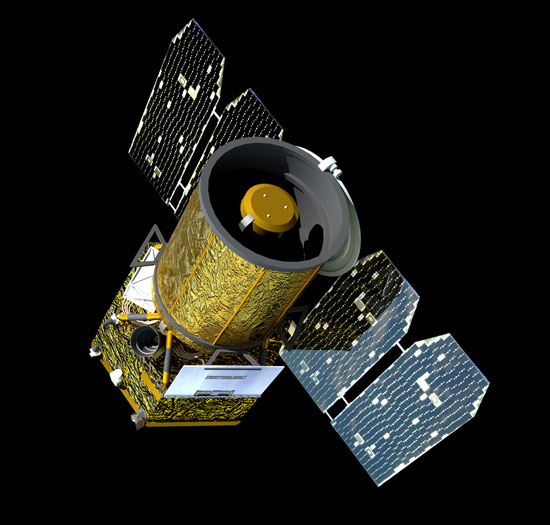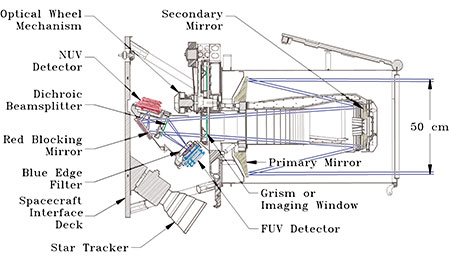The Galaxy Evolution Explorer (GALEX) satellite was a NASA mission led by the California Institute of Technology. Launched on April 28, 2003, GALEX performed a variety of imaging and spectroscopic surveys of different depths and sky coverage in ultraviolet wavelength. Its goal was to observe galaxies investigating how they and the stellar formation within them evolved across 10 billion years of cosmic history, from the early Universe up to the present. The mission lasted ten years ; GALEX was decommissioned on June 28, 2013.

Credits: NASA/JPL-Caltech
The instrument is a 50 cm modified Ritchey-Chrétien telescope with a 1.25 degree field-of-view. The telescope only took science data while behind Earth’s shadow. Each eclipse lasted approximately 30 minutes, and could observe one or more pointings on the sky (known as “visits”), which could last 90 seconds up to the full ~30 minutes. Multiple “visits” to the same part of the sky are then combined by the GALEX pipeline to make a “coadd”.
Five imaging surveys in each of two bands: Far UV (FUV) 1350-1780Å and Near UV (NUV) 1770-2730Å range from an all-sky survey (limit mAB~20-21) to an ultra-deep survey of 4 square degrees (limit mAB~26). Three spectroscopic grism surveys (R FUV/NUV 200/90) is performed with various depths (mAB~20-25) and sky coverage (100 to 2 square degrees) over the 1350-2800Å band.

Credits: NASA